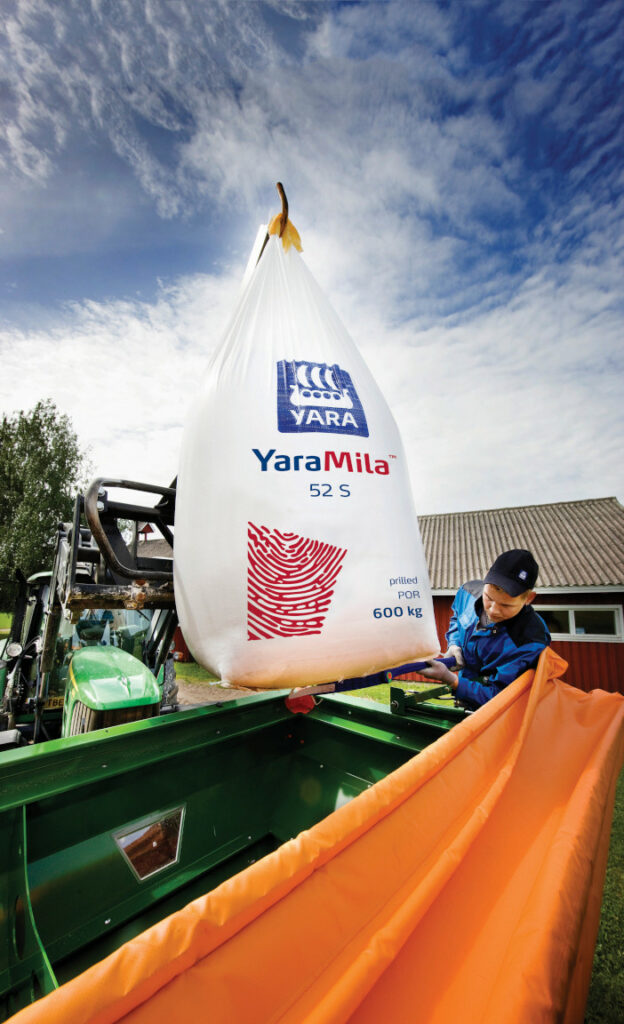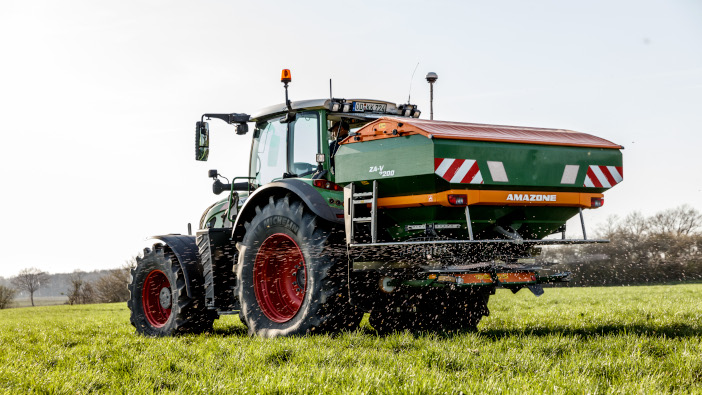Gas prices, along with high global demand, food security concerns, and reduced imports, have all led to increased costs of fertiliser production, rising by 200 euro per ton in one week alone.
As natural gas is a fundamental component of nitrogen production, farmers are considering how to plan their nitrogen (N) applications cost-effectively. Yara recently held a webinar advising farmers of best practice on this topic, and how to derive the best return on investment (ROI) possible.
Natalie Wood, agronomy operations manager at Yara, first looks at winter wheat based on long-term trial data from 2006 to 2021. “The N-response curve from the average of the data shows that the best ROI comes from the first 100kg of N, which produced a yield increase of 2.7 tonnes per hectare,” said Ms Wood.
“The next 60kg increased that yield by 0.77 tonnes per hectare – less than half that of the first 100kg applied. The final 60kg gives us 0.38 tonnes per hectare. Ordinarily, we would push for that extra, small response. However, current prices may change your decision.”
To illustrate that choice, she takes three different scenarios: those farmers who purchased fertiliser early (paying about £280 a tonne), those who purchased or will purchase late (at about £700 a tonne) and those who split their purchases between the two timeframes.
“For the early buyer, no real changed is necessary, and they can still push for yields,” said Ms Wood. “Those who split their purchase will want to average the two prices. The margin is still highest at the 220kg rate but not significantly different to 160kg, so you probably want to apply somewhere between 180-200kgN/ha. For the late buyer, they need to think differently, the best margin now drops to 160kgN/ha. You might want to go up to 180kg, but certainly no lower than 160kg. Once in spring, you can re-evaluate and look at the crop’s potential and crop and fertiliser pricing.”

Looking at long-term data for spring barley from 2011-2021, the first 80kg of N per hectare gives the best response. The next 80kg still offers ROI but only 0.86T increased yield per hectare compared to the 3.0 of that first 80kg. Therefore, the three different buying times follow a similar pattern to wheat with the early buyer continuing as normal, the 50:50 buyer dropping their rate slightly and the late buyer will now be looking at 80-120kgN/ha (spring barley for feed).
For OSR, the advice isn’t too different from normal. “Applying NPKS little and often will result in optimum productivity,” Ms Wood said. “You’re aiming to get 3.5 GAI in the spring with optimum amounts of nitrogen and that will be the same this year.”
“This year, Nitrogen Use Efficiency (NUE) is even more critical than usual,” she added. “Sulphur is vital for uptake – even a slight deficiency will start to affect the plant’s capability of utilising applied nitrogen. You can also use smart tools and variable rate applications to make sure you’re creating an even, homogenous crop that’s easier to harvest with less lodging and increased overall efficiency of production.”
Philip Cosgrave, county grassland agronomist at Yara, said that many farmers will be looking to reduce fertiliser applications in 2022, in a bid to offset the impact of high fertiliser prices, but this needs to be carefully considered. Lower N rates mean less grass grown and if grass/forage demand is the same then any shortfall in feed will have to be purchased.
Mr Cosgrave recommended slurry testing: “Testing analysis may show there’s more N in your slurry than the RB209 book value which then means there is scope to lower your fertiliser applications without a yield penalty.”
He also discusses optimising slurry application rates. By shifting to spring applications, it’s possible to improve N availability by 0.26kg/m3. The right equipment can also help; using a trailing shoe increases N availability by 0.1kg/m3.
“With grazing, the first application is the riskiest,” added Mr Cosgrave. “Be careful where that N is being applied – don’t just make a blanket application. Look at soil temperatures and pick out early parts of your farm where you’re likely to get the best response to early N.”
Planning ahead, Mark Tucker, head of agronomy at Yara, said: “Whatever price you paid for N, or are about to, make use of all the tools and services available. Drill into your numbers and do some careful calculations so that you can maintain ROI. That’s what it’s all about, keeping that number as high as possible.”


